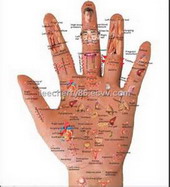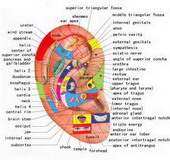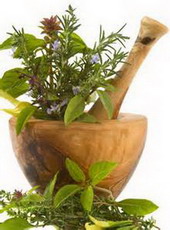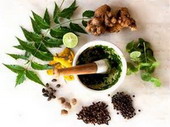Real Images
About Wu Xing
The theory of the Five Phases is an attempt to classify phenomena in terms of five quintessential processes, represented by the emblems Wood, Fire, Earth, Metal, and Water. Its place in Chinese medicine and other Chinese intellectual pursuits has been misunderstood ever since the first Occidentals tried to explain Chinese natural philosophy to the West over 300 years ago. During this century, the academic world has made some advances toward a better appreciation of the Five Phases theory.
The Five Phases are not in any way ultimate constituents of matter. This misconception has long been embodied in the common mistranslation “Five Elements” and exemplifies the problems that arise from looking at things Chinese with a Western frame of reference. The Chinese term that we translate as “Five Phases” is wu xing. Wu is the number five, and xing means “walk” or “move,” and, perhaps most pertinently, it implies a process. The wu xing, therefore, are five kinds of processes; he4nce the Five Phases, and not the Five Elements. The theory of Phases is a system of correspondences and patterns that subsume events and things, especially in relationship to their dynamics.
More specifically, each Phase is an emblem that denotes a category of related functions and qualities. The Phase called Wood is associated with active functions that are in a growing phase. Fire designates functions that have reached a maximal state of activity and are about to begin a decline or a resting period. Metal represents functions in a declining state. Water represents functions that have reached a maximal state of rest and are about to change the direction of their activity. Finally, Earth designates balance or neutrality; in a sense, Earth is a buffer between the other Phases. In the sense that the Phases correlate observable phenomena of human life into images derived from the macrocosm, they serve a similar function as that of elements in other medical systems.
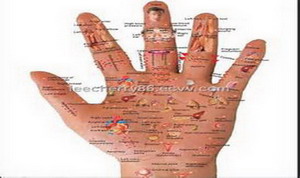
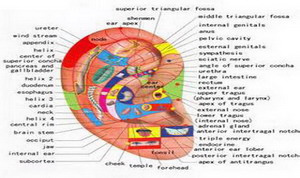
In more concrete terms, the Five Phases can be used to describe the annual cycle in terms of biological growth and development. Wood corresponds to spring, Fire to summer, Metal to autumn, and Water to winter. And what of Earth? Earth may represent the transition between each season (and it is commonly used to represent “Indian summer”). These correlations are known as the Mutual Production order of the Five Phases. They represent the way in which the Five Phase interact and arise out of one another in the typical yearly cycle. There are thirty-six mathematically possible orders in which the Five Phases can be arranged, but only a few of them are actually used either in medicine or in other disciplines.
The application of the Five Phases to seasonable growth is only one example of how the system was used. In time, the five generic categories were used of classifying many more perceptions, from colors, sounds. Odors, and taste sensations to emotions, animals, dynasties, the planets, and ultimately everything in the universe. Correlations ere also made between the Phases and various Organs and anatomical regions, which is how the connection between the Phases and medicine came about.
Before exploring
Before exploring the use of Five Phases theory in medicine, it is helpful to consider its history and relationship to Yin-Yang thinking. While Yin-Yang theory stretches back into China’s remote antiquity, Five Phases theory was not documented until the fourth century. It is nevertheless reasonable to assume that a scheme as complex as the Five Phases theory did not emerge spontaneously. The framework must have been gestating for some time. Some intimation of the Five Phases can be found in many writings of the period from about 500 B.C.E to 200 B.C.E; which was a time of grate intellectual, political, and social ferment in China. The Five Phases theory was first systematized by Zou Yen (approximately 350 B.C.E to 270 B.C.E) and his followers. The original emphasis of the theory was as much political as it was scientific. The correct timing of rites and the succession of dynasties came to be interpreted through the dynamics of the Phases, which were then called the Five Virtues or Powers. As Joseph Needham comments, “there were intense and anxious debates about the proper color, musical notes and instruments, sacrifices, etc. appropriate to a particular dynasty or emperor.”
The number five was important in the numerology of the period, particularly for classifications of Earthly things. Various other numbers, such as six, four, and three, turn up in early classification schemes for things pertaining the Heaven. It is difficult to determine whether the importance of the number five led to Five Phases theory or the popularity of the Five Phases theory Led to things being classified in fives.
During the third and fourth centuries; the Five Phases theory and the Yin-Yang theory existed simultaneously and independently of each other. For example, Lao Tzu and Chuang Tzu refer extensively to Yin and Yang but do not mention the Five Phases. Unlike other traditional cultures with systems of elemental correspondences (e.g; the Greek Four Elements or the Hindu Three Doshas), the Chinese thus had two systems of referents. It was not until the Han dynasty, a period of great eclecticism and synthesis, that the two systems began to merge in Chinese medicine. “The five elements had not been part of the most ancient Chinese medical speculations” were incorporated into the clinical tradition that culminated in the Nei Jing. Certain parts of the Nei Jing refer to the Five Phases, while others do not. Yet other texts, such as the Discussion of Cold-Induced Disorder and the biography of Bian Que in the Shi Ji or Historical Records, make no mention whatsoever of Five Phases theory. The Five Phases theory continued to undergo change even after its incorporation into Chinese medicine. It is not until the Song dynasty that the relationships between the Phases were commonly used to explain the etiology and processes of illness.
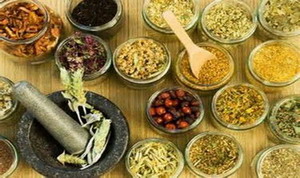
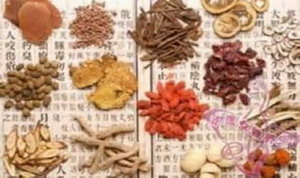
Many attempts were made to fit the Five Phases neatly into the Yin-Yang structure. For example, Wood and fire were considered the Yang Phases, being active in character, while Metal and Water, and associated with quiescent functions, were the Yin Phases, Earth was the balance point between Yin and Yang. Yet despite this apparently successful marriage between Five Phases and Yin-Yang theory, the two systems of correspondence frequently yielded different interpretations of health and disease. For example, Five Phases theory might emphasize the following correspondences stated in the Nei Jing: The Liver opens into the eyes; the Kidney opens into the ears; the Heart opens into the tongue. Disorder in a particular orifice would necessarily be linked to its corresponding Organ. Yin-Yang theory, on the other hand, might emphasize the following quite different assertions of the Nei Jing: The pure Qi of all Organs is reflected in the eyes; all the Meridians meet in the ears; the tongue is connected to most of the Meridians. Yin-Yang theory would not necessarily see a link between a part and a part. Rather, all disharmonies of the eyes, ears, or tongue would be interpreted in terms of patterns. Thus, an eye disorder could be part of a Liver disharmony or perhaps a Lung, Kidney, or Spleen disharmony, depending on the configuration of other signs. The differences between these medical interpretation stem from the fact that Five Phases theory emphasizes one-to-one correspondences, while Yin-Yang theory emphasizes the need to understand the overall configuration upon which the part depends.
At the bottom line, the Five Phases theory is a crucial emblem system used to discuss and represent clinical phenomena. In fact, one could have written this entire book from a Five Phases perspective. If this had been done then Earth would correspond to Spleen, Qi, Dampness, worry, Consciousness of Possibilities, and faithfulness; wood would correspond to Liver, Blood, wind, Non-Corporeal Soul, and human kindness; water would correspond to Kidneys, Essence, Cold, fear, and the Will; fire would correspond to Heart, warmth, elation, Heart Spirit, and propriety; and metal would correspond to Lungs, Fluids, dryness, Corporeal Soul, and righteousness. Much of what was presented would have fallen into place. Few practitioners would agree with these relationships, but in some situations the correspondence could be forced and be more metaphysical than practical.
To be valuable, the Five Phases theory requires flexibility and sensitivity. Distinguishing between useful and not useful correspondences can be difficult, and practitioners can disagree. For example, some practitioners are happy with such correspondence as those of plants and grains; others are not. Odors are excluded from many lists, but a number of practitioners feel that they are clinically quite useful. The medically useful correspondences can be divided into two groups. There are those that make metaphysical sense in the Chinese mode of thought, or are constructed to have associations outside the body. And there are correspondences derived not from metaphysical premises, but from the functions of the Organs of from empirical observation. The best example of the former is color: green for Wood, red for Fire, yellow for Earth (the soil of northern China, where these correspondences originated, is yellow), white for Metal (silvery luster), and black for Water (the inky depths of the ocean). Similar explanations, however strained, are available for the seasons, climatic conditions, directions, tastes, and smells. An example of the latter type of correspondence is that between relationships was never posited by the ancient Chinese. The nose is, however, the opening most often affected by diseases of the Lungs, and in Chinese physiology the nasal tract is considered an extension of the Lungs. Because the Lungs are associated with Metal, the nose is also given that association. Similarly, the association of anger with the Liver is probably due to careful observation of people, rather than to any notion of the “woodenness” of becoming enraged. The distinctions between the two types of correspondence is important in explaining the dynamic behind the diagnostic use of the Five Phases theory, and also gives perspective on the whole system.
Chinese medicine has had to creatively adapt the Five Phases theory in order to fit it to actual medical experience. The physiology that grew out of Five Phases theory, for example, is not always identical with Eight Principal physiology. The Eight Principal tradition is based on empirical observation sand is intimately connected to Yin-Yang theory, concentrating on the functions of the Organs and extrapolating their interrelationships from their functions. The Organs are thus the key to the system. Five Phases theory does not always agree with this understanding, and in that case, it is simply ignored. For example, in Five Phases physiology, the Heart corresponds to Fire. Traditional Chinese texts, however, consider the Kidneys to be the physiological basis for the Fire of the other Organs. And so, the Five Phases theory’s formal correspondence would be conveniently forgotten.
Five Phases correspondence
The Five Phases correspondence is often a convenient way to organize significant clinical reality. Let us take facial color correspondence as an example. A yellow complexion often appears in a Spleen disharmony (yellow and Spleen are both associated with Earth), and a darkish complexion often appears in a Kidney disharmony (black and Kidneys are associated with water). A red face, however, although it can be part of a Heart pattern, is just as likely to be part of the Heat pattern of any Organ. A white face can appear with Lung disharmonies, but can also be part of the Cold pattern of any Organ. A blue-green complexion, while often part of a Liver disharmony, might as easily be part of a Congealed Heart Blood pattern. The correspondences of climate work much the same way. Although it is true that the Spleen is especially sensitive to Dampness, the Kidney to Cold, the Lungs to Dryness, and the Liver to Wind, Dryness does not necessarily imply a Lung disharmony, for it can easily affect the Stomach, Intestines, or Heart. Coldness does not necessarily imply the Kidneys, because the Spleen, Lungs, and Heart can also be affected by Cold. And so on. The Five Phases correspondence can be helpful as a guide to clinical tendencies, but the test of veracity in Chinese medicine remains the pattern. Pattern thinking overrules all formal rules. The flexibility of Yin-Yang theory, including Five Phases, resides in its insistence that all correspondences finally depend on the configuration of a unique whole.
The Five Phases are often used to describe clinical processes and relationships and to help in the conceptualization of proper treatments. It is and explanatory theory and is not meant as a binding doctrine. For example, the Five Phases can be used to describe the general processes that take place during the annual cycle. That sequence – the Mutual Production order of Wood, Fire, Earth, Metal, Water -- describes normal generative functions. In the sequence, the producer is called the Mother and the produced, the Child (an example of the tendency toward concreteness in traditional Chinese thought). Some patterns of disharmony can be explained by reference to the Mutual Production order, especially patterns of Deficiency. The Child of a Deficient Mother, for instance, becomes Deficient for want of proper nourishment. Conversely, when the child is Deficient, it may “steal the Qi” of the Mother, making it Deficient as well. If an Organ is Deficient therefore, treatment can be affected by strengthening the Mother Organ. When there is an Excess in an Organ, the Child can be drained. The concept of treatment is important in acupunctur5e, but is seldom used in herbal medicine.
Another sequence is known as the Mutual Checking or Mutual Control order. In this sequence, each Phase is said to check or control the succeeding Phase. The Control order, like the Mutual Production order, describes naturally occurring phenomena, and it works to ensure that the disharmony within the Control order might mean that an Organ is exerting Excess control over the Organ that it regulates. This would lead to a Deficiency in the regulated Organ. Or the Organ that should be regulated may become the regulator. Other situations can arise, but these two are the most likely. The former imbalance is known as a insulting cycle, and the latter as a humiliation cycle
Natural Cures
There are two basic differences between Chinese and Western diets. First of all, Western diet focuses almost exclusively on diet for weight loss. Chinese diet is designed not only to help you lose weight but also to treat many other ailments, including hypertension, diabetes, common cold, gastritis, diarrhea, constipation, cough, hepatitis, psoriasis, common acne, eczema and so on.
In Chinese diet, for example, it is considered bad for someone with a cough to eat apple with honey. When I have a headache, I want to know which foods I should eat to cure my headache and which I should avoid to prevent my headache from becoming worse. When I have diarrhea or am suffering from diabetes, I want to know which foods I should eat treat my symptoms and which to avoid preventing my problems from becoming worse.
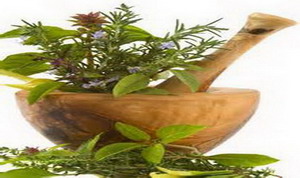
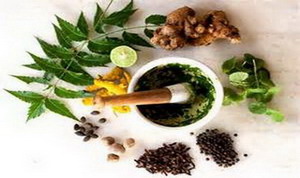
When I am overweight, I want to know which foods I should eat to reduce my weight and which not to eat to avoid gaining more weight. To lose weight, no doubt, is part of Chinese diet, but there are many other considerations as important as weight loss in the minds of Chinese dietitians. Recently, I read a diet book written by a well-known Western physician and to my great amazement, I found no information on dietary treatment of such symptoms as sore throat, hemorrhoids, hiccupping, vomiting, fever, toothache, psoriasis, stomachache and other ailments – all important treatments when using the Chinese diet.
The second difference between Chinese and Western diets: In Western diet, foods are considered for their protein, calorie, carbohydrate, vitamin and other nutrient content, but in Chinese diet, foods are considered for their flavors, energies, movements and common and organic actions. It works like this: If I feel cold in my body and limbs, naturally I like to eat something that will warm me; if I feel hot, something to cool me. If I have a weak stomach, naturally I like to eat something that will make my stomach stronger; if I feel my kidneys are weakening, something that will make my kidney stronger. Ginger will warm me, because it has a warm energy; mung beans will cool me, because they have a cool energy; sugar can make my stomach stronger; because it tastes sweet and acts on the stomach; yam will make my kidneys stronger; because it acts on the kidneys in a special way.
To be sure, we can find nutritional information on foods in Western diet. For example, we know that red pepper contains vitamins A and C, but it does not tell us that it can warm us we know mung beans contain some protein and carbohydrates, but not that mung beans can cool us; we know that black pepper contains some protein, but not that it can make our stomachs stronger; we know that yam contains protein, carbohydrate, calcium and many vitamins, but not that it can make our kidneys stronger. Thus, it is easy to see how Chinese diet differs from Western diet. The essential aspects of Chinese diet in regard to foods are: the five flavors of foods, the five energies of foods, the movements of foods and the common and organic actions of foods.
The five flavors of foods include pungent (acrid), sweet, sour, bitter and salty. Pungent foods include green onion, chive, clove, parsley and coriander. Sweet foods include sugar; cherry, chestnut and banana. Sour foods include lemon, pear, plum nad mango. Bitter foods include hops, lettuce, radish leaf and vinegar (I list vinegar as bitter because the Chinese call vinegar “bitter wine.” Vinegar tastes both sour and bitter; it is common for some foods to have two simultaneous flavors). Salty foods include salt, kelp and seaweed. The flavors of foods are important in Chinese diet, because different flavors have their respective important effects upon the internal organs.
Foods that have a pungent flavor can act on the lungs and large intestine; foods with a sweet flavor on the stomach and spleen; with sour flavor on the liver and gall bladder; with a bitter flavor on the heart and small intestine; foods that have a salty flavor can act on the kidneys and bladder. Let’s take the sweet flavor as an example, that acts on the stomach and spleen. It is common knowledge among Chinese and Western dietitians, that eating sweet foods will put on weight, but Chinese and Western dietitians give different explanations.
According to Western dietitians, eating sweet foods puts on weight because sweet foods contain a large number of calories; according to Chinese dietitians, eating sweet foods will put on weight because sweet foods can act on the stomach and spleen, which are in charge of digestive functions.
In other words, in Chinese diet, sweet foods are considered capable of improving the digestive functions, which is why they are good for people with a weak digestive system. In talking to a Western audience about Chinese diet, one question frequently comes up: How do we determine the flavors of such foods as beef, pork and celery that have no distinct tastes? In Chinese diet, beef has a sweet flavor, pork has a sweet and salty flavor and celery a sweet flavor.

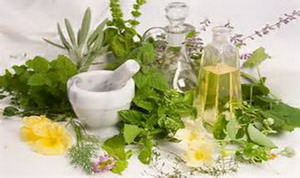
Some foods have one flavor, but others may have two or three. Undoubtedly, the flavors of many foods are very difficult to determine precisely, but the Chinese have done it through many centuries of experience. The process may look like this: At the beginning, some foods with obvious flavors are found to act on some internal organs and perform specific actions in the human body. The basic relationships between flavors and internal organs and the actions studied and analyzed by a process in science called the inductive method. As time goes on, other foods whose flavors are more difficult to determine may be found capable of acting upon some internal organs and performing some specific actions. The flavors of such foods are determined on the basis of their organic effects and specific actions. This process in science is called the deductive method.
In general, the common actions of foods in regard to their flavors are as follows: Pungent foods (ginger, green onion and peppermint) can induce perspiration and promote energy circulation. Sweet foods (honey, sugar and watermelon) can slow down the acute symptoms and neutralize the toxic effects of other foods. Sour foods (lemon and plum) can obstruct the movements and are useful, therefore, in checking diarrhea and excessive perspiration.
Bitter foods, such as animals’ gall bladder and induce diarrhea (which is why many Chinese herbs recommended to reduce fever and induce diarrhea taste bitter). Salty foods (kelp and seaweed) can soften hardness, which explains their usefulness in treating tuberculosis of the lymph nodes nad other symptoms involving the hardening of muscles or glands. In addition, some foods have a light flavor or little taste. These foods normally have two flavor classifications. Cucumber, for example, has sweet and light flavors. Foods with a light flavor promote urination and may be used as diuretics. Job’s tears is one of the outstanding examples.
The following are foods arranged by different flavors: BITTER: apricot seed, asparagus, bitter gourd, wild cucumber, celery, cherry seed, coffee, grapefruit pell, hops, kohlrabi, lettuce, lotus plumule, radish leaf, sea grass, vinegar, wine. SLIGHTLY BITER: ginseng, pumpkin. LIIGHT: black pepper, castor bean, cherry seed, chive, chive root, chive seed, cinnamon bark, cinnamon twig, clove, Chinese parsley, cottonseed, dillseeds, fennel, garlic, ginger, dried or fresh, grapefruit peel, green onion, leaf and white head, green pepper, kohlrabi, kumquat, leaf mustard, leek, marjoram, nutmeg, peppermint, radish and radish leaf, red pepper, rice bran, rosemary, soybean oil, spearmint, star anise, sweet basil, taro, tobacco, white pepper, wine.

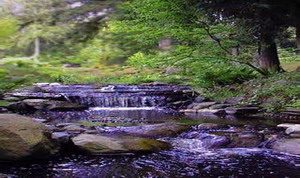
SLIGHTLY UNGENT:
asparagus, caraway. SALTY: abalone, barley, chive seeds, clam (sea, fresh water, river clamshell, sea clam-shell), crab, cuttlebone, cuttlefish, duck, eel blood, ham, kelp, milk (human), oyster, oyster shell, pork, salt, seagrass, seaweed. (All recommended shells are crushed into powder before using them.) SOUR: apple, apricot, crab apple, grape, grapefruit, hawthorm fruits, kumquat, litchi, loquat, mandarin orange, mango, olive, peach, pineapple, plum, raspberry, small red or adzuki bean, star fruit or carambola, strawberry, tangerine, tomato, vinegar. EXTREMELY SOUR: lemon, pear, sour plum. SWEET: abalone, apple, apricot, apricot seeds (sweet), bamboo shoots, banana, barley, bean curd, beef, beetroots, black fungus, black sesame seeds, black soybean, brown sugar, cabbage (Chinese), carp (common carp, gold carp, grass carp), carrot, castor bean, celery, cherry, chestnut, chicken, chicken egg, yolk and white, Chinese wax gourd, cinnamon bark, cinnamon twig, clam (fresh water), coconut, coffee, common button mushroom, corn, corn silk, crab apple, cucumber, red and black date, dry mandarin orange peel, duck, eel, eel blood, eggplant, fig, ginseng, grape, grapefruit, grapefruit peel, guava, guava leaf, hawthorn fruits, honey, horse bean, hyacinth bean, Job’s tears, kidney bean, kohl-rabi, kumquat, lettuce, licorice, lily flower, litchi, longan, longevity fruit, loquat, lotus (fruit and seed), malt, maltose, mandarin orange, mango, milk (cow’s and human), mung bean, muskmelon, mutton, olive, oyster, papaya, peach, peanuts, pear, persimmon, pineapple, plum, pork potato, pumpkin, radish, raspberry, red small bean or adzuki bean, rice bran, rice (polished), saffron, sesame oil, shiitake mushroom, shrimp, soybean oil, spearmint, spinach, squash, star anise, star fruit, strawberry, string bean, sugar cane, sunflower seed, sweet rice, sweet potato, sword bean, tangerine-orange, taro, tomato, walnut, watermelon, wheat, wheat bran, white fungus, white sugar, wine, yellow soybean.
The energies of foods refer to their capacity to generate sensations – either hot or cold – in the human body. As an example, eating foods with a hot energy will make us experience hot sensations in the body and foods with a cold energy, cold sensations. In daily life, each of us knows that eating ice makes us feel cold and drinking hot water makes us feel warm. This is because ice has a cold energy and hot water, a hot energy. But ice or hot water produce only temporary effects. To produce long-lasting effect, herbs are used as substitutes for foods that provide only temporary relief.
In other words, to produce cold or hot sensations, herbs are more effective than foods and foods are more effective tan ice or hot water. The five energies of foods are cold, hot, warm, cool and neutral. But the adjectives, “cold,” “hot,” “warm,” “cool,” “neutral,” do not refer to the present state of foods. For example, tea has a cold energy, so even though you may drink hot tea, you are actually drinking a cold beverage.
Shortly after the tea enters your body, its heat (a temporary phenomenon) will be lost and as it begins to generate cold energy, your body begins to cool off. Another example, red pepper, has a hot energy. Even though you may eat cold red pepper from the refrigerator, you still consume a hot food. Shortly after it enters your body, its temporary coldness is lost and your body begins to feel hot.
When I discuss the energies of foods, therefore, I refer to what the foods do in our bodies – whether they generate hot or cold, warm or cool, or neutral sensations. Hot is opposed to cold; warm is opposed to cool; neutral is somewhere between warm and cool. Cold and cool foods differ from each other; as do warm and hot foods. Bamboo shoots have a cold energy, black pepper a hot energy; cucumber has a cool energy, chicken a warm and corn a neutral energy. It is important for us to know the energies of foods, because different energies act upon the human body in different ways.
This has important effects on good health. As an example, when a person suffers from cold rheumatism and the pain is particularly severe on cold winter days, then it is good for him or her to eat foods with a warm or hot energy, which should considerably relieve the pain. Or if you suffer from skin eruptions that worsen when exposed to heat, it is good to eat foods with a cold or cool energy to relieve your symptoms. While the energies of foods play an important role in Chinese diet, the Chinese also classify the human body into cold and hot types.
One person may have a hot physical constitution, another a cold one. The person with a hot physical constitution should consume more foods with a cold or cool energy; the person with a cold physical constitution, more foods with a hot or warm energy – a plan the Chinese call “a balanced diet.” Such a diet is always related to each individual’s physical constitution and may differ from one person to another. During my lectures and in my clinical practice, people often ask me: Is tea good? Is coffee better than tea? Is liquor good for you? There are no absolute answers.
In fact, these are the wrong questions. It would make more sense to ask: Is tea good for me? Which is better fore me, coffee or tea? Is it good for me to drink liquor? Those questions can be answered correctly.
Tea is good for you if you have a hot physical constitution, because tea has a cold energy; if you have a cold physical constitution, coffee is better for you than tea, because coffee has a warm energy.
If you have a cold physical constitution, liquor can warm you, but if you have a hot physical constitution, it may create many symptoms of certain hot diseases, such as skin problems. For this reason, in the Chinese diet, foods with a cold energy are used to counteract intoxication and alcoholoism. The process of learning the energies of foods is basically the same as that of finding the flavors of foods.
At first, the foods that obviously make us feel hot may be considered as having a hot energy; the foods that make us cold, a cold energy. For example, obviously ice makes us feel cold, so it is believed to have a cold energy; and since red pepper makes us feel hot, it is thought to have a hot energy. As time goes on, any food that can make us hot is regarded as having a hot energy; any food that can make us cold, a cold energy.
It’s interesting to see how important and relevant the energie4s of foods in Chinese diet can be. Suppose on a cold rainy day, on your way home from work, you car breaks down. You walk to a service station to hire a tow truck and by the time you get home, you’re soaked to the skin and shivering with cold. You suspect that you caught cold.
If you have some knowledge of the Chinese diet, you prepare a bowl of fresh old ginger soup and drink it hot. You feel much better, because fresh old ginger has a warm energy that warms you and a pungent flavor that makes you perspire. Let’s use another example. Suppose you develop hives with severe itching. You cannot cook your meals, because the heat in the kitchen makes your itching intolerable. If you have a fair knowledge about Chinese diet, you cook a bowl of mung bean soup and stir in some sugar.
After drinking the soup a few times, your symptoms disappear, because the cold energy in both mung beans and sugar heal your hot symptoms. Of course, many other factors need to be considered as well, but the energy of foods is important. Suppose you suffer from hemorrhoids and know about Chinese diet. You eat two cooked (underdone) whole bananas (with the peels) every day.
The bananas should improve the symptoms, because banana has a cold energy. On the negative side, let’s suppose you have no knowledge about Chinese diet and you happen to make a mistake. In the first example, when you had the cold, instead of drinking hot ginger soup, you drank a bowl of mung bean soup. That would have made your symptoms worse. With the hives, had you taken hot sauce at dinner instead of mung bean soup, your itching would probably have become much worse. With the hemorrhoids, if instead of eating bananas, you drank whiskey every day, that too could make your symptoms deteriorate.

